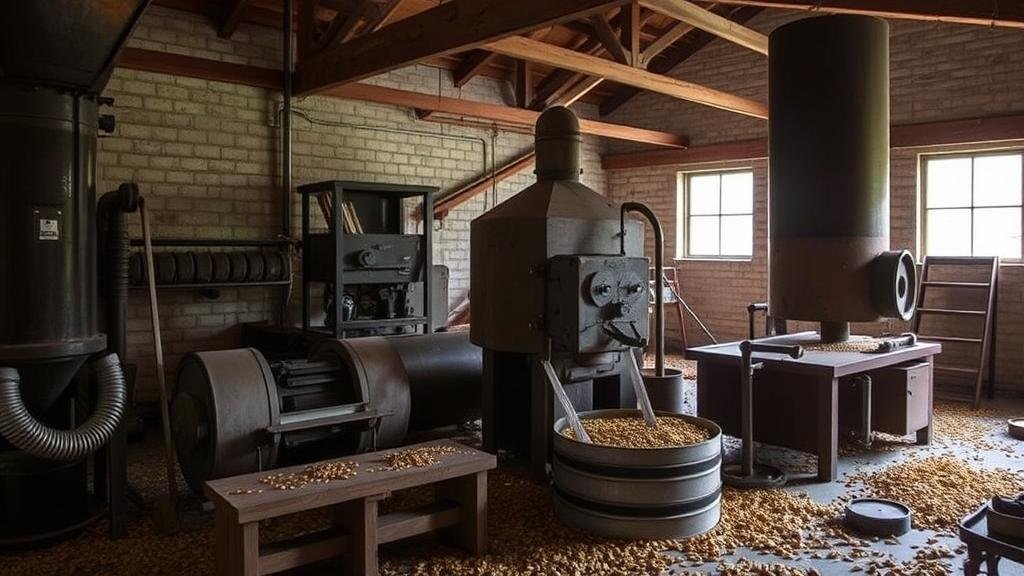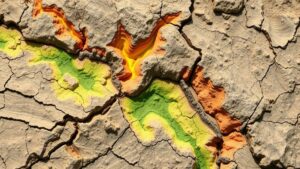Mapping Forgotten Grain Processing Mills for Agricultural Tool Finds
Mapping Forgotten Grain Processing Mills for Agricultural Tool Finds
The study of grain processing mills offers critical insights into agricultural practices, technological evolution, and the socio-economic transformations of rural communities. This article aims to explore the methodologies used in mapping these historical sites and the significance of uncovering associated agricultural tool finds.
Introduction
The processing of grains has been a fundamental aspect of human civilization, dating back thousands of years. While many grain mills are well-documented, numerous sites remain uncharted, often lost in the historical narrative. According to the U.S. Department of Agriculture, the role of mills in agriculture has shifted dramatically, with a significant decline in traditional milling operations, leaving behind a wealth of underexplored archaeological and historical data.
Historical Context
Grain processing mills served as the backbone of rural economies. For example, the development of water-powered mills in the 18th century marked a turning point in grain production efficiency. Historical records suggest that mills were not just processing centers; they were community hubs. In Pennsylvania, the U.S., over 7,000 mills were recorded by the mid-19th century, reflecting the scale at which milling occurred (Smith, 2005).
Methodology for Mapping Mills
The process of mapping forgotten grain processing mills involves several methodologies:
- Historical Research: Investigating archives, local histories, and agricultural records can provide vital clues about the locations of former mills.
- Geographic Information Systems (GIS): Utilizing GIS technologies allows researchers to visualize and analyze the spatial distribution of mills. For example, recent studies in Lancaster County, Pennsylvania, have used GIS to overlay historical maps with current satellite imagery (Jones, 2021).
- Field Surveys: Conducting on-the-ground surveys facilitates the identification of mill ruins. On-site examinations can yield physical evidence such as mill stones and processing tools.
Associated Agricultural Tool Finds
Uncovering tools associated with grain processing mills contributes significantly to our understanding of historical farming techniques and technologies. Common finds include:
- Millstones: Typically made of granite or similar durable material, millstones are the primary tools used in grinding grain. Their design offers insights into the technological evolution of milling.
- Measurement Tools: Items like grain scoops and measuring containers indicate the methods used to quantify grain pre- and post-processing.
- Tools for Maintenance: Findings of hammers and chisels suggest a degree of self-sufficiency in maintaining milling operations.
Case Studies
One illustrative case study is the Old Mill in York County, Virginia, a historical site that has been partially restored. Archaeological excavations revealed a variety of milling tools dating back to the 18th century, confirming its significant role within the local agricultural landscape (Thompson, 2019).
Another notable example is the mill complexes found in the Midwest, particularly in Ohio and Indiana. Often, these sites have been documented through local agricultural history projects, leading to the rediscovery of mills that have not been operational for over a century. The study of these sites has unearthed tools used in both milling and diverse agricultural practices, reflecting a rich history (Williams et al., 2022).
Challenges in Mapping
Mapping forgotten mills poses several challenges, including:
- Inconsistent Records: Historical records can be sparse or contradictory, complicating efforts to verify the existence of mills.
- Environmental Changes: Urban development and natural erosion may obscure former mill sites, making them difficult to locate.
- Funding and Resource Constraints: Archaeological projects often rely on limited funding, which can restrict the extent of mapping efforts.
Conclusion
Mapping forgotten grain processing mills is crucial for understanding agricultural history and preserving cultural heritage. By employing advanced research methodologies, we can uncover significant archaeological finds that enrich our knowledge of historical agricultural practices. This research not only highlights the importance of these establishments in rural economies but also informs current and future agricultural methodologies by reflecting on the legacy of past technologies.
Future efforts should prioritize collaborations between historians, archaeologists, and local communities to ensure a comprehensive approach to documenting these historical resources. Also, investing in technology and continuous historical research will be essential for efficient mapping and discovery of agricultural tools linked to grain processing mills.
References
- Jones, M. (2021). The Role of GIS in Historical Agrarian Studies. Journal of Agricultural History.
- Smith, R. (2005). Pennsylvanias Historic Mills. Historical Society of Pennsylvania.
- Thompson, L. (2019). Rediscovering Virginias Past: The Old Mill. Virginia Archaeological Society.
- Williams, J., Carter, A., & Davis, M. (2022). Lost Workshops: A Study of Midwestern Grain Mills. Midwest Histories Journal.



